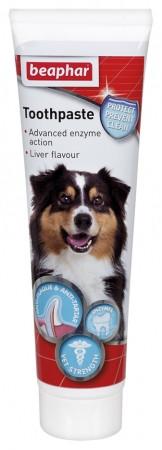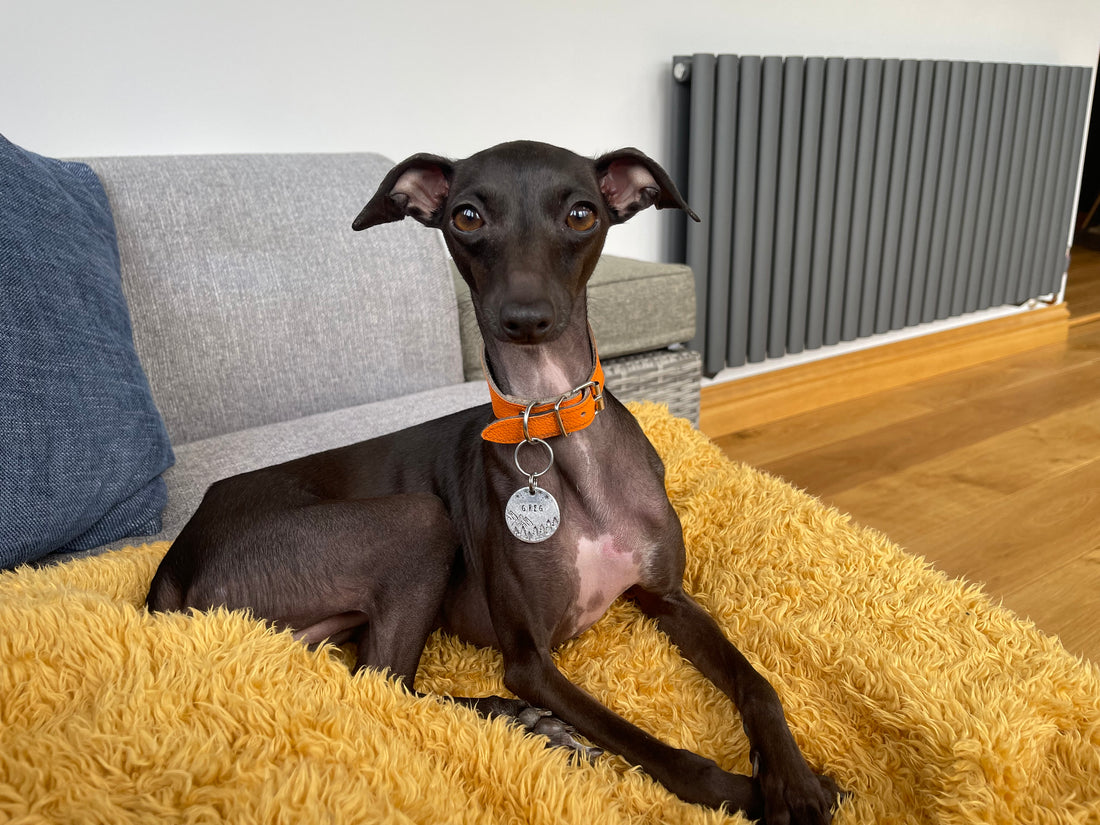
How long do Italian Greyhounds live?
Italian Greyhounds usually live between 13-15 years of age. This can obviously be shorter if the Italian Greyhound has health problems or is involved in an accident, which then results in a premature death. Responsible breeders screen for health conditions such as PRA, autoimmune problems, Legg-Calve-Perthes disease and hypothyroidism. Although the Italian Greyhound is not as delicate as he or she first appears, care must be taken to avoid hazardous situations that might result in the dreaded broken leg. Read on for information and advice on how to care for your Italian Greyhound.
Grooming
Italian Greyhounds are relatively low maintenance on the grooming front. They do not need to go to the groomers due to their fine, shorthaired coats and they need minimal brushing at home. Italian Greyhound’s only need to be bathed if they have rolled in something they shouldn’t have or if they regularly pee on their legs and chest as many male Italian Greyhounds do, otherwise bathing and brushing is fairly low maintenance.
Something Italian Greyhounds do need help with is their oral hygiene. Iggys are much more prone to getting periodontal issues than many other breeds so the best way to help prevent future dental appointments with the Vet is to brush your Iggy’s teeth regularly with a small head soft bristled toothbrush and dog specific enzymatic toothpaste. Something like this example below is fine.

NEVER USE TOOTHPASTE MEANT FOR HUMANS ON YOUR DOG. More things you can do to help with your Italian Greyhound’s oral health is to give them chews such as cow ears, yak chews or antlers which are all great ways to help clean plaque off those difficult to reach/brush molar teeth. There is very little evidence to suggest using additives in your dogs water or food which are meant to help with tartar reduction actually work so it is best to manually remove the plaque/tartar yourself by brushing and by your dog having suitable chews. Even with your best efforts to help prevent any dental issues your Italian Greyhound may still need dental treatment in the future with the vet but at least you can know you did your best to help protect them and some Italian Greyhounds will be more prone to getting these issues than others, even if you have a religious oral health routine.
Next up is those nails. Italian Greyhounds weigh very little and are very light footed when walking so their nails will need trimming regularly. It is so important to keep your Italian Greyhound’s nails short because when the nails are left to get too long this alters the way they walk and can increase the risk of leg breaks as a result. Cutting your dogs nails can seem daunting to someone who has never cut a dogs nails before but it is fairly straightforward once you get the hang of it and once your dog is used to having it done. It cam be easy on those dogs with white nails as the quick can be seen easily, it is where the hint of red shows underneath, you want to avoid cutting the quick as this will be uncomfortable for your dog. Like I said, it is easier to avoid with white nails but so many Iggys have black nails where you can’t see where the quick is. A helpful tip for this is to try cut the very ends off and have a look underneath the nail. If you start to see a black jellybean like dot in the middle then this is the shadow of the quick and you have cut far enough. If you can’t see anything then keep taking very small amounts off until you do. Don’t ever cut a large amount off in one go, as you are likely to cut through the quick. You can watch Youtube videos on how to cut dogs nails, which can be very helpful.
Don’t expect for you to get very far the very first time you try to cut your dogs nails, it is likely your Italian Greyhound won’t enjoy what is going on so you need to build up trust that nothing bad will happen to them and try to make it an enjoyable experience for them, which ends in a reward for them. The first few times I did my own Iggy, Greg’s nails I only managed a couple, gave him lots of praise and he got his favourite treat after it. A few tips to help create a good experience:
- Try to do it to begin with when your dog is tired, this way they won’t want to put up as much as a fight
- Get your dog used to you holding its paws before you cut or grind their nails, make sure they get a reward after they let you hold their paws for a decent amount of time
- Try not to push them too far in one go, if you can tell your dog is starting to get distressed maybe it is enough for one day and try again tomorrow with the other nails, always make sure you end on a positive
- Find a position your dog is most comfortable in. My partner holds our Iggy like a baby, with Greg laying on his back, he loves being held like this and regularly falls asleep. I can then get to all his nails and cut them and then he gets his favourite treat when we are done. We have now got to the point where I show him his nails cutters and he jumps for joy as he knows it means he’ll soon be getting a treat and no longer worries about the nail cutting part. Don’t be fooled, it took lots of patience and work to get to this point but it was all worth it as now nail cutting is a stress free, enjoyable experience for Greg (and us).
- Just cut the tips off to begin with. If you cut the nails regularly around every 2 weeks then you should be able to just take the ends off the nail, this then keeps the quick short and the nails at a good length. If the nails have grown a bit longer then you can still just cut the tips off but do it again in a few days time until you get them back to an acceptable level. When the nails grow too long the quicks inside the nail grow longer also so never cut the nail back to where you think it should be in one go as you will likely cut the nail too short, the quick will bleed and this will be uncomfortable for your iggy.
Here is a helpful diagram on nail cutting.
 These are the cutters I use, I think they are great, they cut through the nail like butter, they are easy to use and I recommend them.
These are the cutters I use, I think they are great, they cut through the nail like butter, they are easy to use and I recommend them.

Don’t worry if you can’t use the cutters, another option is a dremel to grind down the nail. Again the same principles of getting your dog used to the dremel before using it on their nails would be a good start to set yourself up for success.
Nails should not touch the floor when your Italian Greyhound is standing. This is how nails look when too long.

Below is how nails look when they are cut nicely and are short enough.
 A good guide on how to use a dremel can be found here. https://italiangreyhoundrescuecharity.org.uk/looking-for-an-italian-greyhound/caring-for-an-ig/grooming-maintenance/keeping-your-igs-nails-trimmed/
A good guide on how to use a dremel can be found here. https://italiangreyhoundrescuecharity.org.uk/looking-for-an-italian-greyhound/caring-for-an-ig/grooming-maintenance/keeping-your-igs-nails-trimmed/
Exercise
Italian Greyhounds need daily walks. They are very energetic dogs however they can also be very lazy. Make sure you don’t over walk your Italian Greyhound puppy as this can be bad for them to be over walked whilst they are still growing. A general rule is to try and stick to A general guide for exercising puppies is to allow them one to two sessions of five minutes walking for each month of age, so for example, a four month old pup could enjoy walks of 20 minutes at a time, once or twice a day. Continue this until they are fully grown and are of an age where their bodies can handle much longer walks and more strenuous activity. Try not to exceed the level of activity that they might have if playing with a pup of similar age and size, bearing in mind that puppies will also rest frequently.
An adult Italian Greyhound would need a minimum walk of around 30 minutes a day along with playtime but they can go for much longer if built up to doing so. Our boy Greg quite happily goes for walks around 10 miles long and keeps up with us, but he has been built up to this. When he isn’t walking he can be very lazy, he loves to sleep in a nice warm and cosy place with lots of blankets after a day out.
Training
Italian Greyhounds are generally timid, and can be quite shy. The breed responds best to reward-based training methods rather than punishment. The trainer should be firm with commands and lavish with praise. Treats used as a reward should be small but immediate when the command is learned and followed. Professional dog trainers should be chosen carefully. Harsh methods just don't work with these intelligent, sensitive little dogs, even though they can be stubborn, especially with toilet training when it is cold or raining outside. Make sure you have lots of patience and be prepared to give lots of time into training.
Nutrition
When you first bring home your Italian Greyhound it is important to keep them on the same food the breeder was giving them initially. If this food suits them and suits you it wouldn’t hurt to keep them going on that. If for some reason you want to change your Italian Greyhound puppy’s food then this must be done gradually, mixing their original food with the new food over time as to help prevent any upset stomachs. Italian Greyhound should do well on a high-quality dog food, whether commercially manufactured or home-prepared with your veterinarian's supervision and approval. Any diet should be appropriate to the dog's age (puppy, adult, or senior). Although you wouldn’t think it by looking at them It's easy to allow Italian Greyhound’s to become overweight, so watch your dog's calorie consumption and weight level. Treats can be an important aid in training, but giving too many can cause obesity. On an IG in proper weight, the hip bones should just be seen. Ribs should not be visible but should be able to be felt under a thin covering of flesh. Learn about which human foods are safe for dogs, and which are not. Check with your vet if you have any concerns about your dog's weight or diet. Clean, fresh water should be available at all times.
Your breeder should be able to give you advice on how to keep your Italian Greyhound safe and healthy and most reputable breeders give new owners a puppy pack with lots of information, tips, advice and guidance on how to look after your Italian Greyhound well to give them the best chance of a happy healthy long life.
